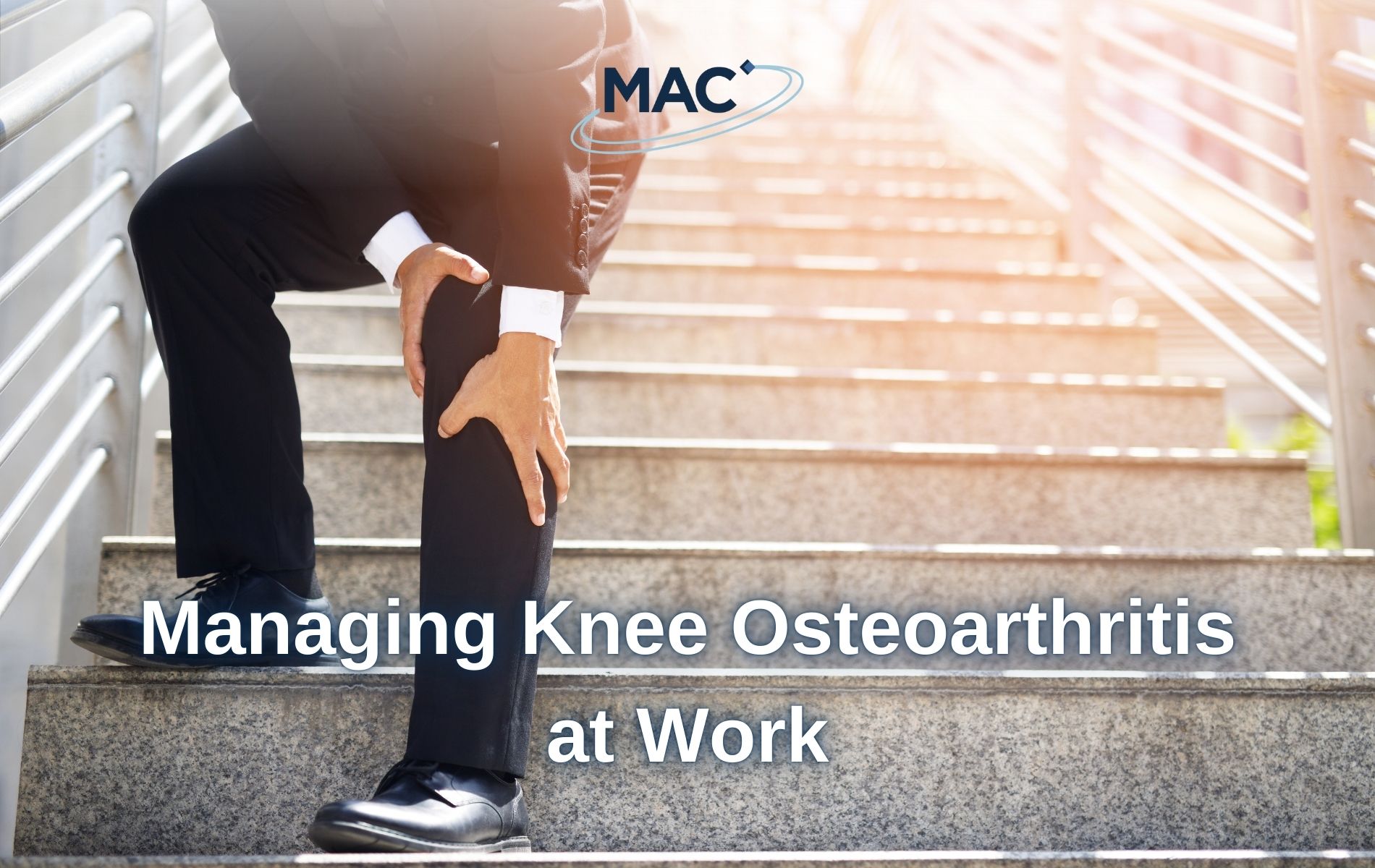While arthritis primarily affects older individuals, it can also strike those in the prime of their working lives. For this World Day for Safety and Health at Work, we’re raising awareness of those dealing with knee osteoarthritis who’s daily working routine can be a daunting challenge.
What is Knee Osteoarthritis?
Osteoarthritis (OA) causes joints to become painful and stiff, leading to difficulty in moving the joint. Almost any joint can become arthritic, but it primarily effects the knees, hips, and hands. The pain from osteoarthritis stems from the protective cartilage at the end of the bones breaking down leading to the bones rubbing against each other.
Challenges in the Workplace
One of the most significant challenges of working with knee OA is that it’s an invisible condition and is thought to affect 1 in 5 adults over 45 in England1. Unlike a visible injury or disability, knee OA’s effects may not be readily apparent to coworkers and employers. This can lead to misunderstandings, scepticism, or even judgment from colleagues who may not fully comprehend the pain and limitations individuals with knee OA endure. Studies have shown that knee OA is strongly associated with early exit from work2.
Another significant issue surrounding working with knee OA is the debilitating pain. The constant discomfort and throbbing pain can make even the simplest tasks, like getting out of bed, feel like a monumental effort, let alone a full day’s work.
Treating Knee OA at Work
Many individuals with knee OA rely on pain medication, which can have its own set of challenges, including potential side effects. The most common medications for knee OA are non-steroidal anti-inflammatory drugs (NSAIDs), which include ibuprofen, naproxen, and diclofenac; these drugs are responsible for approximately 5-10% of all medications prescribed each year3. Taking NSAIDs can lead to indigestion, headaches and drowsiness which could further impact someone’s performance at work.
Accessibility at Work
Furthermore, knee OA can severely limit a person’s mobility. Climbing stairs, walking long distances, or standing for extended periods can be excruciating tasks. For those with jobs that require physical activity, such as retail or construction, the challenges are even more pronounced. Finding ways to adapt to these limitations while maintaining job performance can be incredibly stressful.
Likewise, the issues surrounding living with knee OA can also impact their productivity, the need for frequent breaks may disrupt their workflow, and the condition can also take its toll on an individual’s mental health. In these cases, individuals living with knee OA should try to openly communicate with their employer and colleagues to aid understanding and support of their condition.
Other accommodations can also be made. For example, those who spend long periods of time at desks should take a break from their desk every 20-30 minutes to walk around and use a footrest if their feet don’t easily reach the floor4.
Improving Quality of Life for Knee OA Patients
MAC Clinical Research understand the challenges that come with living with knee OA and are committed to improving the quality of life for those living with the condition through groundbreaking clinical trials, researching into potential new treatments.
MAC Clinical Research are conducting a new study for a potential OA treatment, but we need your help. If eligible you will receive £2010 for your time and commitment, plus reasonable travel expenses will be paid.
If you’re aged between 25 and 79, have moderate or severe OA in your knee, and want to take part in a research trial, visit our knee OA webpage to register your interest.
1 Arthritis Research UK – Prevalence of osteoarthritis in England and local authorities: Birmingham
2 BMC Public Health – The impact of osteoarthritis on early exit from work: results from a population-based study
3 Aging and Disease – A Comprehensive Review of Non-Steroidal Anti-Inflammatory Drug Use in The Elderly
4 Arthritis Foundation – Office Ergonomics: Tips for Arranging a Healthy Workspace




